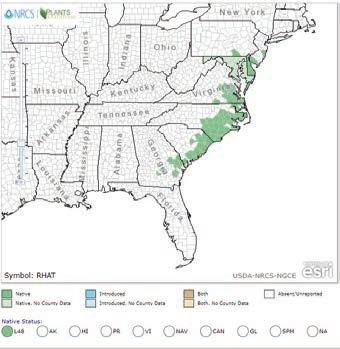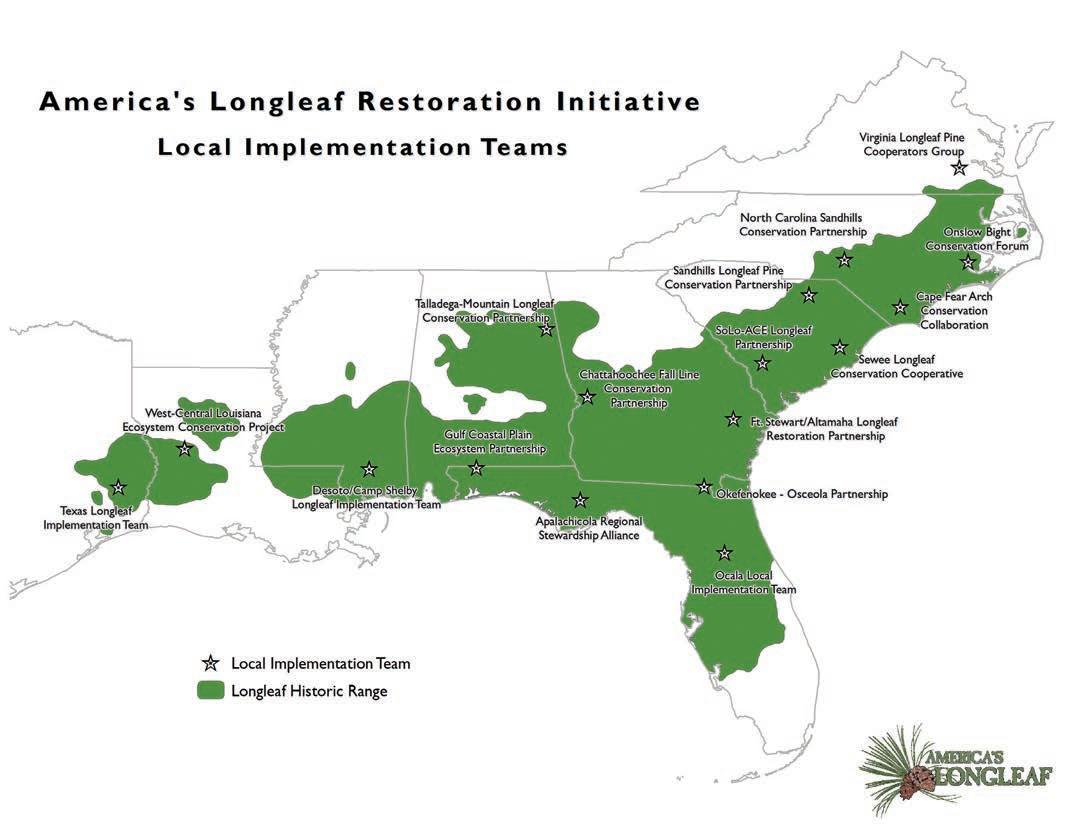
1 minute read
Understory Plant Spotlight
By Carol Denhof, The Longleaf Alliance PLANT SPOTLIGHT
Rhododendron atlanticum (Ashe) Rehder Dwarf Azalea Blueberry Family – Ericaceae Understory
Advertisement

Map showing distribution of dwarf azalea. USDA PLANTS Database. Dwarf azalea blooming in a wetland edge in North Carolina. Photo by Carol Denhof.

Description Dwarf azalea is a low-growing, deciduous shrub that spreads by runners to form dense colonies of stems. The stems rarely grow to over two feet tall unless they are growing in areas that are unburned. When young, the stems are covered with shaggy hair. Newly formed leaves are also hairy on the upper surface but will lose the hairs as they age, retaining bristly hairs along the leaf margins. The leaves measure 1-2.4 inches in length and grow on short stalks. The fragrant flowers form in a dense cluster terminally on the stem prior to the leaves emerging in the spring. They are mostly white but can be pinkish in color, with gland-tipped hairs covering the outside of the flower.
Distribution & Habitat Dwarf azalea can be found growing in longleaf sites with higher soil moisture, such as pine flatwoods, savannas, and bogs. Its distribution is limited to the Atlantic Coastal Plain portions of the longleaf range in Virginia, North Carolina, South Carolina, and Georgia and extends into Maryland, Delaware, and New Jersey. Wildlife Value The nectar of the dwarf azalea is highly attractive to pollinators. Butterflies, bees, and hummingbirds are all known to visit this shrub when flowering.
Be Aware If planting as a landscape plant, be aware that it is highly toxic to humans.
Plant Availability This plant is available commercially from nurseries specializing in native plants and azaleas.
References Godfrey, R.K. and J.W. Wooten. 1981. Aquatic and Wetland
Plants of Southeastern United States: Dicotyledons. The University of Georgia Press. Athens, GA. 933pp. Sorrie, B.A. 2011. A Field Guide to Wildflowers of the Sandhills Region: North Carolina, South Carolina, Georgia. The
University of North Carolina Press. Chapel Hill, NC. 378pp. USDA, NRCS. 2021. The PLANTS Database (http://plants.usda.gov, 17 February 2021). National
Plant Data Team, Greensboro, NC 27401-4901 USA.










